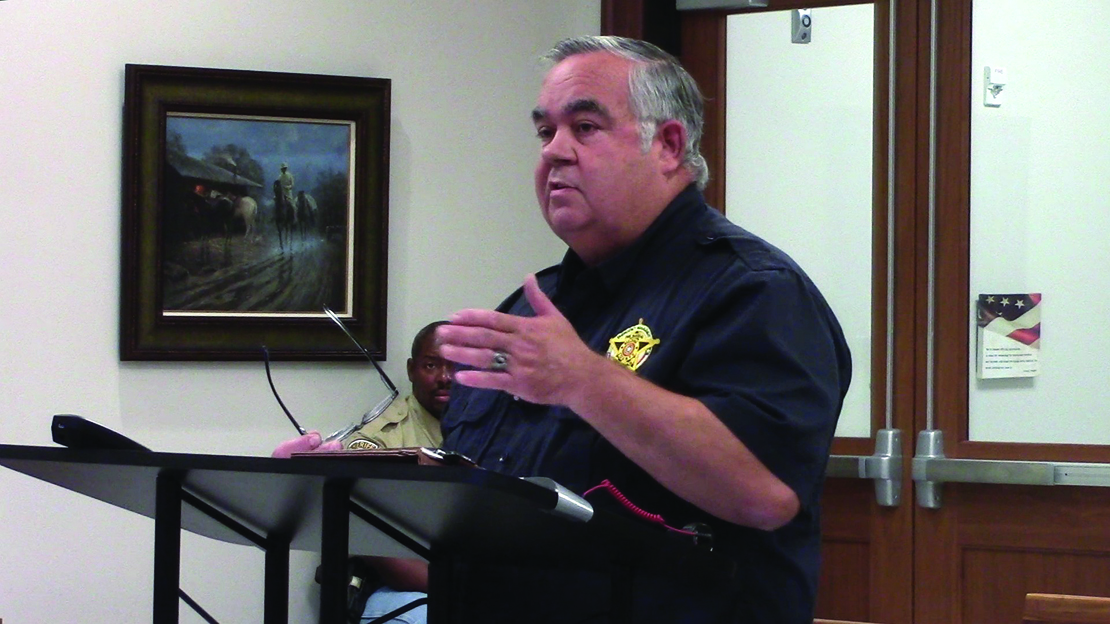By Anton Riecher
Action remains pending on a proposal to adopt the latest version of the International Fire Code specifically to Medina County as an alternative to the state imposed fire code developed by the National Fire Protection Association.
Medina County Emergency Management Coordinator Mark Chadwick, who also serves as the county fire marshal, updated county commissioners in September on the fire code proposal, noting several current projects where strict adherence to the state code would prove costly to the developers.
In one case, fire protection for a 4,000 square foot office building nearing completion in Yancey would have required the Yancey Water Supply Corporation to install large water mains and pumps to pressurize a required fire hydrant to the appropriate pounds per square inch.
“That would be the only fire hydrant in Yancey, Texas,” Chadwick said.
Chadwick instead offered developers a variance on the state fire code based on the structure’s one-hour rated interior fire walls and proximity to a fire department fill point. However, the engineers for the project were still determined to fight for the hydrant.
“That’s ridiculous, in my opinion, to force them to have to spend what would probably have been over $100,000 for a 4,000 square foot building,” he said.
Passage of fire codes specific to Medina County can protect against that, Chadwick said.
The 2021 International Fire Code (IFC) is a model code created by the International Code Council to provide minimum standards for fire prevention and protection. It covers topics such as emergency planning, fire protection systems, hazardous materials and fire service access. The IFC is updated every three years and is the basis for fire codes adopted by many states and local jurisdiction, often with specific local amendments.
Likewise, the NFPA codes such as NFPA 1 and NFPA 101 are model fire and life safety documents that jurisdictions can adopt. With no county fire code in place, the state requires compliance with the NFPA standards. While IFC is a single, comprehensive code, NFPA is a collection of various standards that IFC often references.
Another recent issue cited by Chadwick arising from the lack of county fire codes involved a third-party inspector dispatched by the state writing up violations on 17 buildings in the Medina Valley school district. As an alternative, Chadwick offered to do a re-inspection of the buildings if the district invited the county to serve as a consultant.
The penalties involved totaled $17,000. Correcting them would require extensive internal demolition and reconstruction during the school year, he said.
“To me, that’s ludicrous,” Chadwick said. “I know that’s a pretty powerful statement but to me, that’s ludicrous.”
Of the 17 violations cited, he said he only regarded one as valid. Instead, he recommended the district develop a corrective action plan to address the minor issues cited during the next summer break.
The aftermath of the summer flooding in Kerrville is going to result in more pressure on counties to adhere to state codes, Chadwick said.
“We’re going to be held responsible for how buildings are built in this county,” he said. “We either have to build them to state codes or we have to have our own codes that we can justify that we are building to to keep our citizens and the public safe.”
General requirements that the new codes are expected to address include:
Address identification visible from the road fronting the property with numerals not less than four inches high.
Walls with a minimum of a one-hour fire rating including interior walls with half-inch thick sheetrock on both sides.
Electrical wiring installed with appropriate connections and covers on all outlet and junction boxes.
Ground fault circuit interruption (GFCI) protection outlets installed in areas of higher risk electrical shock near water or moisture such as in bathrooms, kitchens, garages and laundry rooms.
Breaker panels with appropriate breakers installed.
Smoke detectors installed which draw primary power from the electrical system, using batteries as a backup power source.

